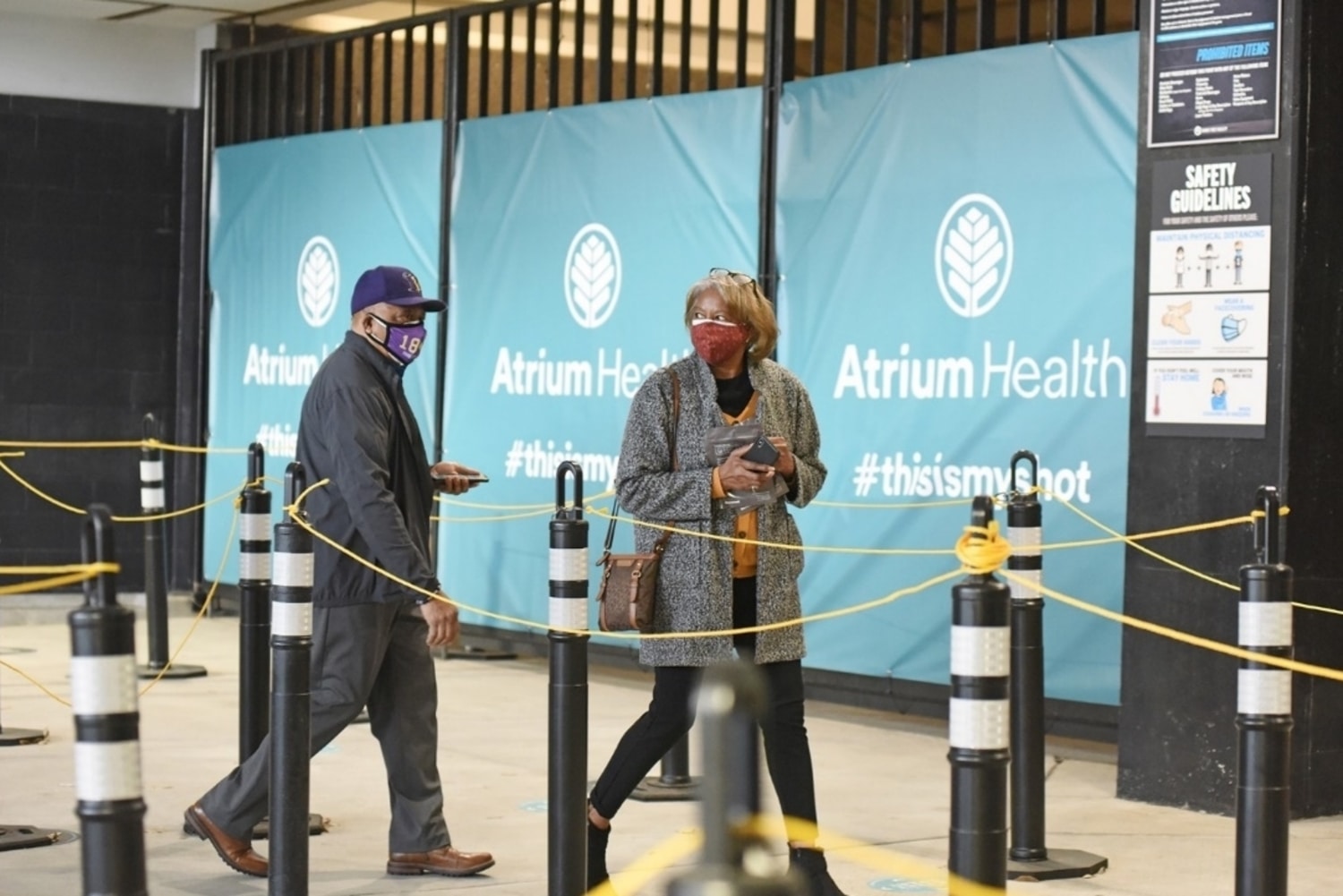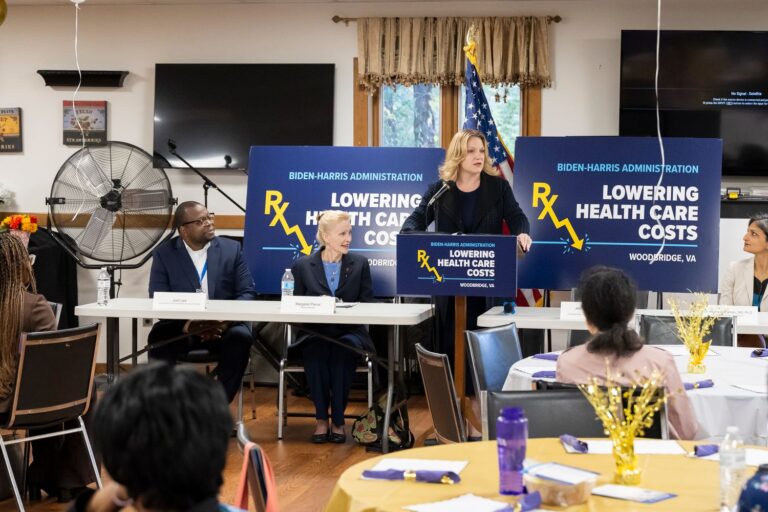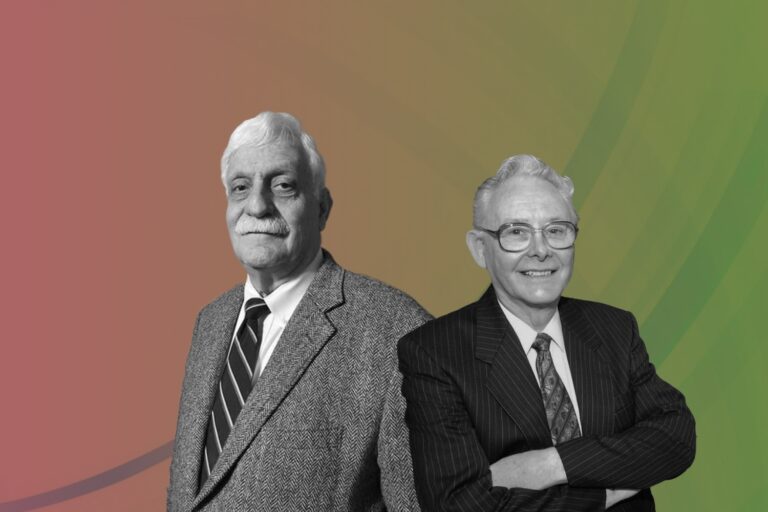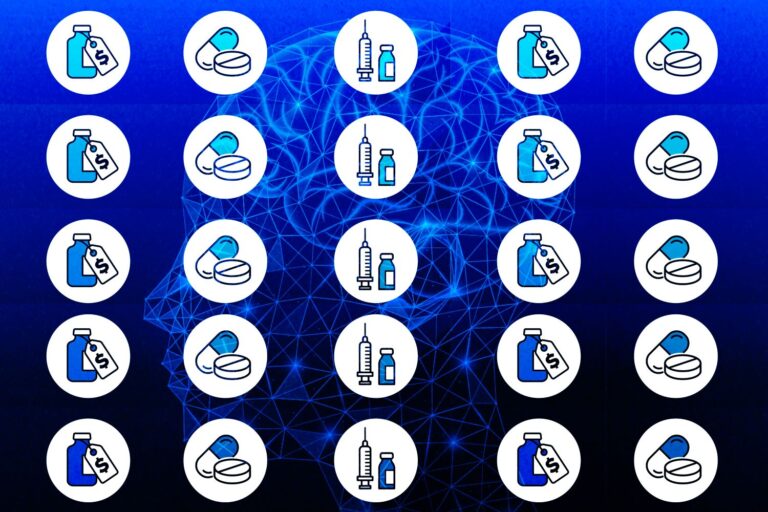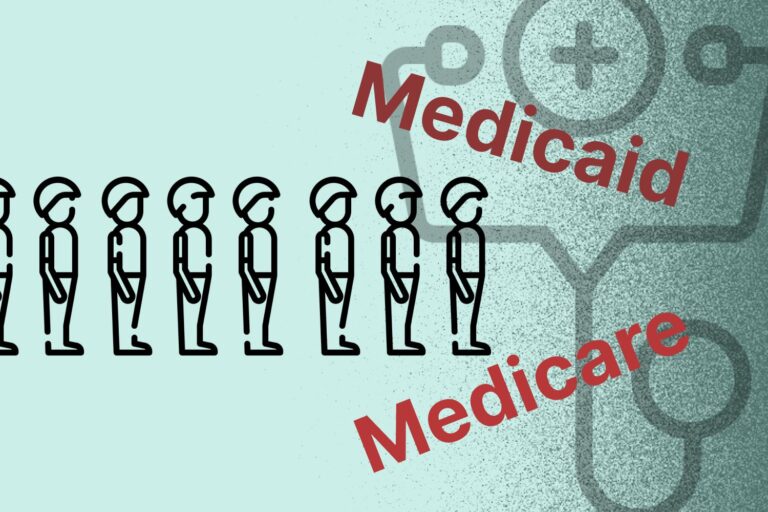Atrium Health: An Example of How to Get Off the Pandemic Roller Coaster
Based in Charlotte, North Carolina, Atrium Health is an integrated, nonprofit health system with more than 70,000 teammates serving patients at 40 hospitals and more than 1,400 care locations. It is known as a nationally recognized leader in shaping health outcomes through innovative research, education, and compassionate patient care.
It’s been a roller-coaster time for Atrium to fight against the Covid-19 pandemic. The organization was forced to navigate limited supplies and abrupt changes in operations. Despite all of those difficulties, it has stood strong and showed extraordinary agility in navigating unprecedented things under strong leadership.
“Through the years, we have faced many challenges as an organization. Yet, no matter the hurdle, no hill has been too high for us to climb on behalf of our patients, neighbors, and friends,” said Eugene A. Woods, president and CEO of Atrium Health. “And more than ever before, our teammates have come together to truly transcend our ‘for all’ mission beyond our hospital walls and into every corner of our community. This spirit of our collective strength has never made me more Atrium Health proud.”
Tackling Health Disparities with the Right Approach
There’s a belief that a truly successful organization is one that knows how to spread value to the community. And Atrium is an example that we need to learn from. During the Covid-19 time, Woods as a CEO of color leading a large academic health system, was profoundly distressed to see people of color disproportionately die because of the virus.
“It was a time for us as healthcare providers to demonstrate that our mission was real and not just words on a page. The only way to do that is through action, really engaging deeply in those communities that would be particularly effective. We’ve known for so long that there are deep disparities in both rural and urban communities that we need to solve,” Woods said.
In response, Atrium has adopted a “not on our watch” approach to focus efforts on vulnerable Charlotte communities, addressing healthcare disparities. This approach took the organization to at-risk communities to deliver millions of free face masks in a collaborative effort with both private and public organizations. It also analyzed geographic data to locate the zip codes where there were disparities in testing and treatment. Additionally, it worked with local pastors and community leaders to deploy mobile medical units.

According to Woods, this approach can be applied on a national scale, and the pandemic proved communities, government agencies and businesses need to partner to create real solutions in health equity. “My call was that we could apply the same level of collaboration and ingenuity in these times. If we could do that, we could eliminate health disparities by 2030, whether in rural or urban communities.”
At the time, Atrium invested in data infrastructure with a variety of analytics including cases and mortality based on race, ethnicity, age, and test location. Data is so important to everything, Woods and his team realized early on that they had the ability to geo, spatially map our communities. “Data is only noise until we collect it, analyze it, and then very quickly put it into use,” he explained.
“Now the data is one thing, then you’ve got to figure out those communities, the type of relationships that you have,” Woods added. “Once we had the data on what neighborhoods were being most affected, then we connected directly with them and formed a partnership in the middle of this that will sustain us going beyond this. We realized that the data is critical and we’re continuing to invest in data capabilities for rapid-cycle deployment on access and health.”
To Woods, the racial health disparities fueled his passion, and that of his entire organization, to adopt a “not on my watch” stance. He feels really proud of how the whole organization stood tall through actions and that its mission was proven real. “We want to look back at these extraordinary, very trying days and say the very best of who we were showed up,” he stated.
Making the Right Technology Investments
The COVID-19 pandemic hit hard putting the healthcare industry through the wringer. It’s required new ways of working and innovative solutions to new problems. Healthcare executives, especially IT leaders up and down the line have learned many valuable lessons in managing the myriad challenges.
According to Andy Crowder, Senior Vice President Chief Information and Analytics Officer at Atrium Health, making the right infrastructure investments with the right vendors in the right emerging technologies is key. “Virtual care, virtual hospitals, remote work – the organizations that excelled and were able to meet patient demands were the ones that already had picked the right vendors and made the right technology investments,” he said.
As he stated, if you found yourself in a position where you hadn’t picked the right partners and made those technology investments, you couldn’t take care of your patients anymore, and you couldn’t engage with your customers in a meaningful way. Atrium saw a drastic increase in virtual care it has never seen before, now that providers and consumers trust it.
“And sometimes that may be a little risky,” he added. “You’re trying to make sure bets for things that aren’t sure. But if you didn’t make the right investments in your collaboration tools, and you didn’t make the right investments in your digital and consumer front door and your virtual capabilities, you absolutely couldn’t meet the needs.”
In the feedback loops that Atrium is having today, Crowder and his team always thought they knew where the friction spots were in digital consumer journeys, but they hadn’t hard-wired those spots. “Even with the right type of feedback loops for our contact centers, we hadn’t hard-wired things into our caregivers’ ecosystem. We’re now doing that, so we don’t have to wait for another mass pandemic to occur,” he said.
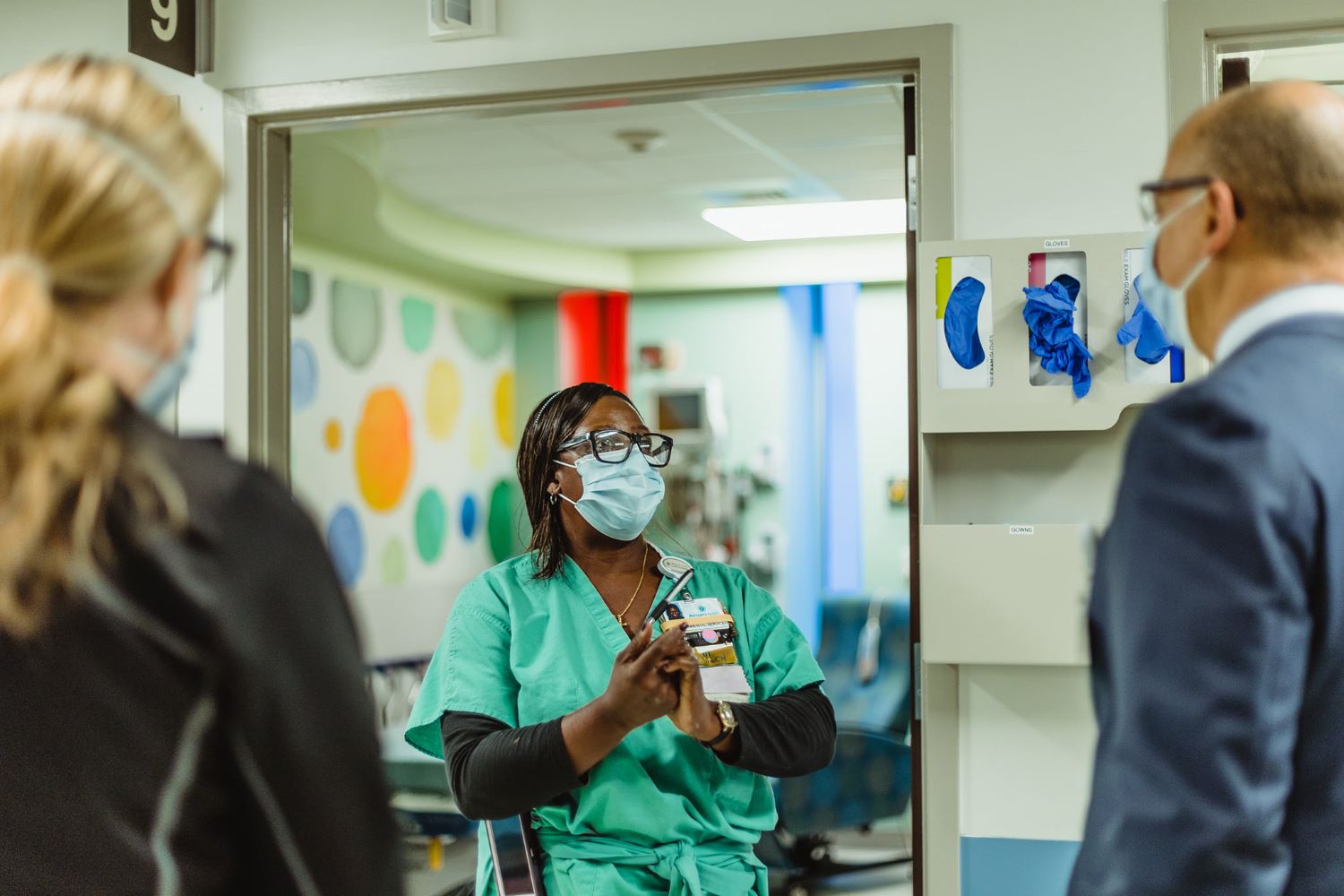
Atrium Health has been getting plenty of feedback about those consumer journeys, and that feedback already was part of its strategy. The organization is a lot more focused and leveraging predictive analytics on the next best thing the consumer needs and wants. “We were forced to do that because things weren’t based on human interaction. You had to leverage those data pathways, where in the past you fell back to maybe some of your old processes – and you couldn’t do those in the pandemic,” Crowder explained.
On the other hand, he doesn’t think of all of this technology as a replacement for in-person interaction and the human experience. There are many places where we still have to have it and Crowder believes we now have broader adoption to leverage it in a more meaningful and holistic way.
Using Predictive Analytics to Reduce Readmissions
Let’s look back at Atrium’s journey to reduce readmissions in 2010. At that time, it focused on providing the best care to patients in the acute-care setting. About three years into that journey, it became clear that focusing solely on the acute-care setting wasn’t enough. As a result, in 2013, the health system began using predictive analytics to learn the types of supports patients needed outside the hospital or emergency department.
Much of the information is captured in patient interviews by caseworkers. Caseworkers are able to determine, for instance, if patients are able to afford their medications, are experiencing food insecurity, have support from family members at home, and have access to transportation for follow-up appointments. “More and more, these are the things impacting readmissions. It’s not about whether a doctor put a congestive heart failure patient on a statin,” said James Hunter, MD, chief medical officer at Atrium Health.
One specific program that has grown out of Atrium’s predictive analytics program is the “Heart Success”. High-risk patients are seen in a multidisciplinary cardiology transition clinic by cardiologists, nurses, social workers, and pharmacists. At that point, patients get to know more about their disease, the symptoms to look for, and people to call if there’s a problem. As a result, the organization has been able to reduce its readmission rate for congestive heart failure patients, which turned out to be really vital in those years of the pandemic.
Valuing Employees’ Career Development
Seeing employees as one of the most important driving forces to the success of the organization, Atrium values career development and invests in professional development resources. It implements workforce development programs that are designed to help individuals achieve their career goals and provide them with one-on-one career coaching and wraparound services.
At the onset of the pandemic, Atrium saw fluctuations in resources and staff allocation, affecting many of those workforce development programs. As a result, it increased the number of workforce development program participants enrolled and expanded its support services. The organization also used the grant to increase financial support for participants, including tuition, books, fees, and supplies.
Besides, Atrium’s funding provided WIFI and laptops for participants who have to attend programs virtually because of the pandemic. The grant turned out to be very helpful for employees from rural areas who now have reliable internet and no longer need to park outside. As the organization looks to the future, it plans to continue finding ways to expand career development to all its locations and surrounding communities.
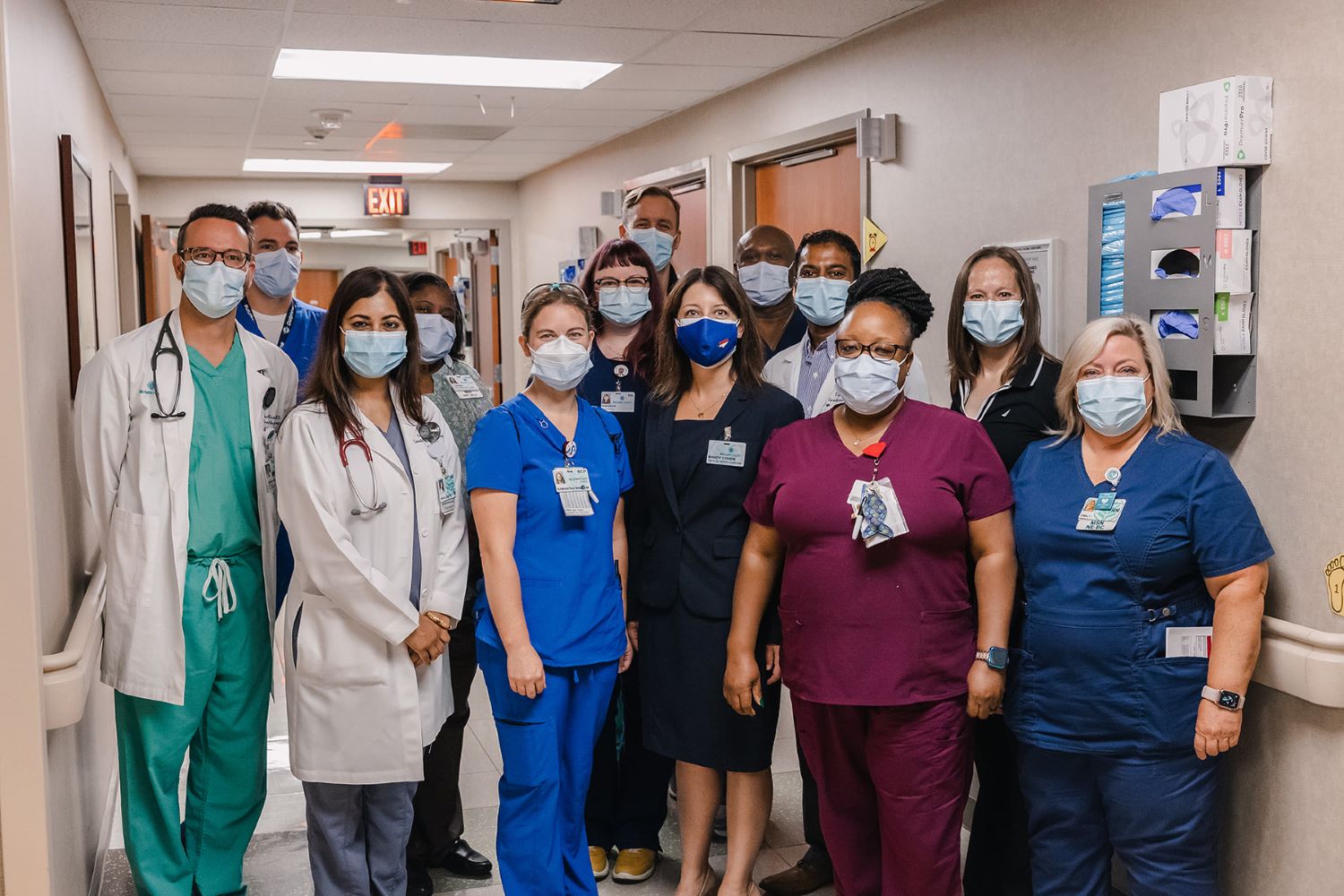
Integrating Reaction and Innovation Amidst the Pandemic
The Covid-19 pandemic has challenged even the strongest companies this year, demanding both decisive reaction and rapid innovation, which means reacting effectively while engaging in an exercise to reshape and transform your organization. In Woods’s opinion, there will be times when reaction and retrenchment need to dominate, and times when reimagination and reshaping take the lead so leaders must work daily to balance those two.
As we can see during the crisis, balancing those two elements is what Atrium was doing really well, offering some valuable lessons on how to face immediate threats and embrace opportunities on the way of repositing the business.
#1. Take Action with Speed
Facing the pandemic, Atrium had to rapidly shut down hundreds of thousands of elective surgery appointments while addressing new supply chain challenges, such as sourcing personal protective equipment. At the same time, there was a surge in requests from the public about the virus. Within days, Atrium had innovated to integrate Microsoft’s healthcare bot with the latest health authority updates to handle demand from a swiftly growing community of online users.
#2. Maintain Culture and Essential Competencies
In difficult times like those past unprecedented years, many firms need to retrench and Atrium was not an exception. The organization had to transfer thousands of employees to remote working, facing with the decision about furloughing non-active staff. Nevertheless, in line with its caring corporate culture, it chose to keep staff on as long as they were willing to retrain.
#3. Keep the Long-term Vision in Mind
Long-term visions should be put on hold when the sky is falling, but they should not be abandoned or forgotten. As Woods explained, there would be a whole other new set of variables and dynamics that you don’t have visibility on now, so you need to have a flexible enough model and framework to be able to incorporate that into your strategy. But at the end of the day, it’s still the initial vision that a company has the mission to stick around.
#4. Continue to Innovate During Reactivation
Even after the crisis, it’s critical to hold on to lessons learned as you transition back more to the new normal. Companies can also leverage crises to accelerate transformation plans. According to Woods, a reimagination framework has helped Atrium focus on priorities for customers, business models, capabilities, investments, alliances, new ways of working, leaders, and workforces. “It’s clear that we are not going back to the way things were,” he stated.
The Bottom Lines
From all of the above, we can understand what efforts Atrium Health has been made in order to succeed through the crisis. There are some valuable lessons for healthpreneurs to learn from, toward a better and more resilient future. As Woods said, “In moments of crisis, that’s when you find out what your bedrock values are.”

